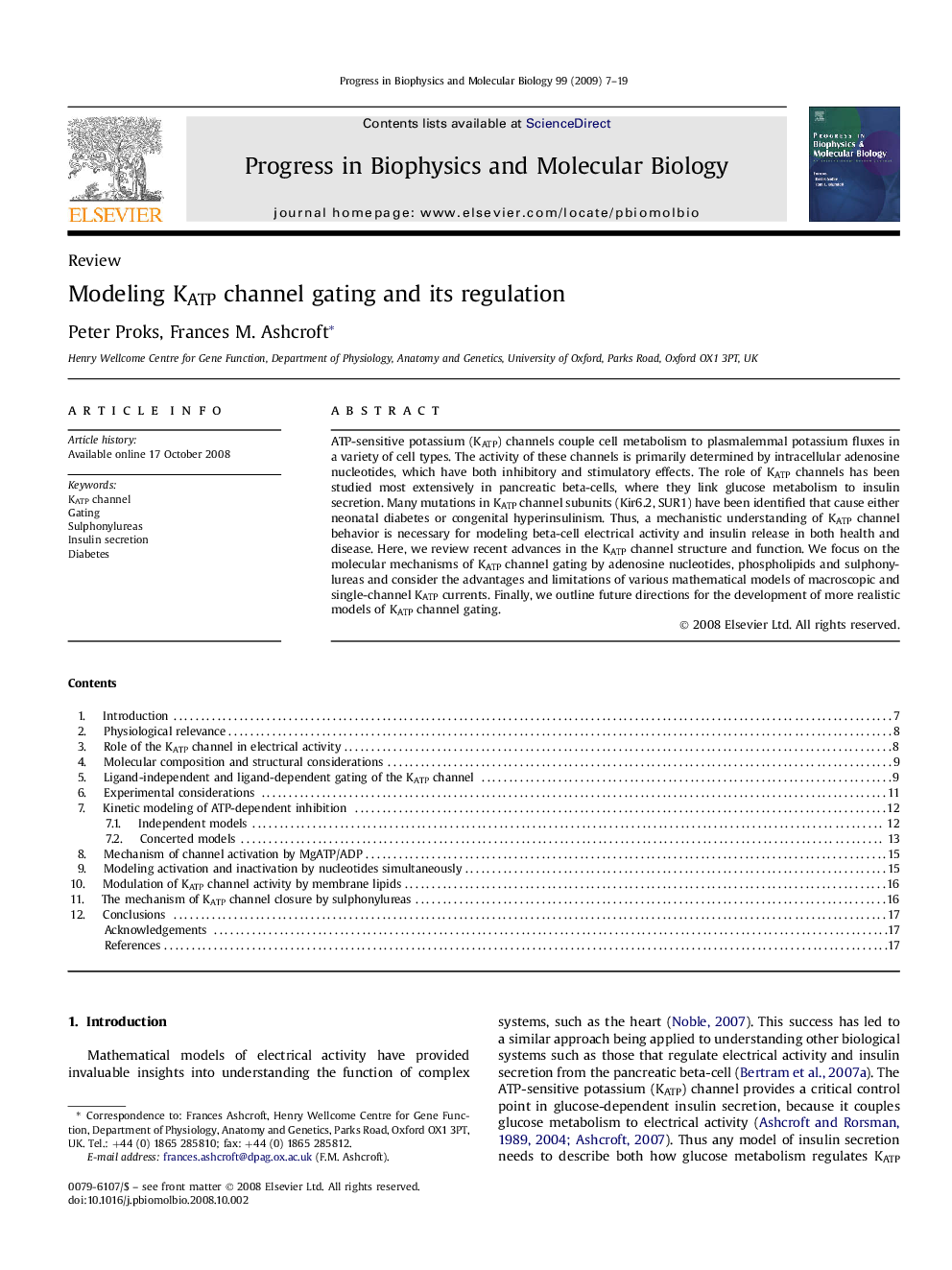| Article ID | Journal | Published Year | Pages | File Type |
|---|---|---|---|---|
| 2070300 | Progress in Biophysics and Molecular Biology | 2009 | 13 Pages |
ATP-sensitive potassium (KATP) channels couple cell metabolism to plasmalemmal potassium fluxes in a variety of cell types. The activity of these channels is primarily determined by intracellular adenosine nucleotides, which have both inhibitory and stimulatory effects. The role of KATP channels has been studied most extensively in pancreatic beta-cells, where they link glucose metabolism to insulin secretion. Many mutations in KATP channel subunits (Kir6.2, SUR1) have been identified that cause either neonatal diabetes or congenital hyperinsulinism. Thus, a mechanistic understanding of KATP channel behavior is necessary for modeling beta-cell electrical activity and insulin release in both health and disease. Here, we review recent advances in the KATP channel structure and function. We focus on the molecular mechanisms of KATP channel gating by adenosine nucleotides, phospholipids and sulphonylureas and consider the advantages and limitations of various mathematical models of macroscopic and single-channel KATP currents. Finally, we outline future directions for the development of more realistic models of KATP channel gating.
